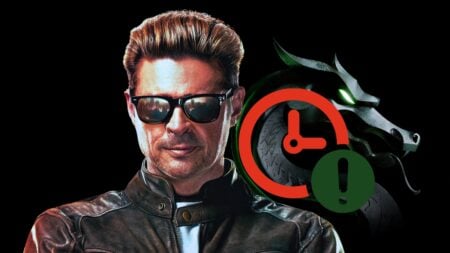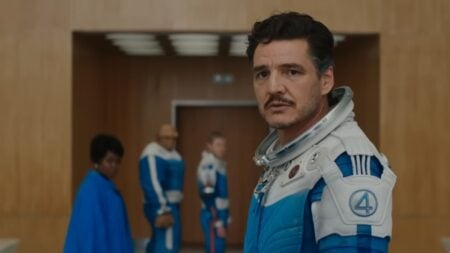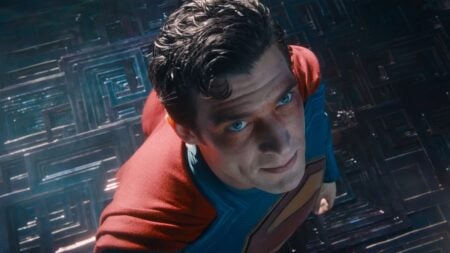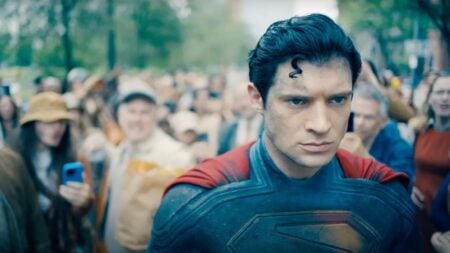Skip To...
Directed by legendary stop-motion director Henry Selick, the creative vision behind The Nightmare Before Christmas, the fantasy-horror flick Coraline follows the titular 11-year-old Coraline Jones, who moves to Ashland, Oregon, and discovers a secret passageway leading to an alternate dimension. In the Other World, she encounters button-eyed doppelgängers of her parents and neighbors who lavish her with attention. Little does she know, these are minions of the Other Mother, known as the Beldam, i.e. a witch/fairy.
Coraline was released in 2009 to immense critical acclaim, with particular praise for stunning visuals and narrative accuracy to Neil Gaiman’s novel of the same name from 2002, which serves as the basis for the story. In the last decade, hardcore theorists have dissected every frame for clues about Coraline’s many underlying themes, but some are far less believable.
Don’t Trust The Cat

Many of Coraline‘s most far-fetched theories revolve around The Cat. In the movie, The Cat meets Coraline in the Other World and becomes her wise-cracking companion in the ongoing battle against the Beldam. The Cat follows Wybie Lovat wherever he goes, demonstrating the ability to disappear and reappear at will. There is a commonly held theory that The Cat is a minion of the Beldam used to lure Coraline into the Other World and deceptively gain her trust.
This would suggest that The Cat’s intentions are to metaphorically ‘feed’ Coraline to the Beldam himself, when the reality is quite the contrary. In fact, The Cat does everything he can to help Coraline, especially when it comes to freeing the Ghost Children. He is often seen at odds with the Beldam, whom refers to him as “Vermin” and there is even the assumption that a missing chunk of The Cat’s ear was the result of an altercation with the Other Mother.
The Cat Is Actually a Fairy

As if it weren’t bad enough that The Cat supposedly works for the Beldam, but just like the malevolent witch/fey creature, The Cat is also a fairy, A Random Critique suggests. The theory points out that the well — down which Coraline throws the Beldam’s remains — is surrounded by a “fairy ring” (i.e. a portal to another world). A Random Critique mentions characteristics that fairies share with the Beldam, including interdimensional travel, shapeshifting, giving gifts, and the power of names.
In mythical/spiritual culture, it is said that knowing a fairy’s name grants the speaker power over it. Another example would be from The Conjuring universe, where speaking Valak’s name grants Lorraine Warren a form of control over it. However, The Cat is never shown to shapeshift in Coraline, nor is it significant that we don’t know his name. Gaiman’s book even states that “cats don’t need names because they already know who they are.”
Coraline Suffers From Schizophrenia

Another theory from A Random Critique suggests that Coraline suffers from schizophrenia and that her perception of the Other World and the Beldam are figments of her imagination. This theory is often intertwined with the commonly held belief that Coraline caused a car accident that left her mother in a neck brace and inadvertently placed herself in a coma. It is said that her comatose state has induced these so-called “hallucinations” of other dimensions and the Beldam. It is believed to be a manifestation of Coraline’s guilt post-accident.
A Random Critique justifies the theory by suggesting Coraline suffers from insomnia and hostility, two prominent symptoms of schizophrenia. However, the movie’s editing thematically cuts between the Real World and the Other World to signify the passing of time, not to lend to the belief that Coraline struggles sleeping. It seems to be more of a conscious choice by Selick than a deliberate indication of anything in Coraline’s psyche.
The Pink Palace Limbo World

As we know, in Coraline, there are two worlds; the Real World and the Other World. Coraline and her parents move into the Pink Palace Apartments. However, The Fangirl points out that no one ever interacts with any of them. She also mentions Mr. Bobinsky, who is seen doing squats on the roof of the complex in one of the movie’s opening shots — yet no one seems to ‘notice’ him doing so. This theory essentially claims that a third world, outside of the Real World and the Other World, exists as a parallel universe to the Pink Palace residents.
This is known as the ‘Pink Palace Limbo World’ and was created simultaneously with the Other World by the Beldam. But there are huge holes in the theory, as it tries to suggest the Beldam’s powers are limited purposefully to trick Coraline. But if it were true that the Beldam could create an alternate reality that stretches beyond the Pink Palace grounds and effectively emulates the entire town, it would make the existence of the Other World completely redundant. As for the residents, there doesn’t need to be many explanations as to why they’re as quirky as they are. We’re talking about the director of A Nightmare Before Christmas here.
The Cat and the Lovats Are Related

The Cat is voiced by Black actor Keith David, whom Disney fans might recognize as Dr. Facilier in The Princess and the Frog. In Coraline, since The Cat watches over Wybie and rarely leaves his side, The Theorizer has made a connection between The Cat and the Lovats by suggesting they could be relatives. There isn’t much foundation for this theory besides the fact that The Cat happens to be a black cat and the Lovats are African-Americans.
But it’s far more likely for The Cat to be black in correlation with Coraline’s status as a ‘witch’ (as Wybie calls her) rather than any direct relation to the Lovats. There are even theorists who take it to the extreme and believe The Cat was a relative of the Lovats who died and reincarnated. While it is true that The Cat likely became trapped in the Other World and swore to defend Wybie and Coraline from the Beldam, there is no concrete evidence besides the color of the Lovat’s skin and The Cat’s fur that suggests any relation.







